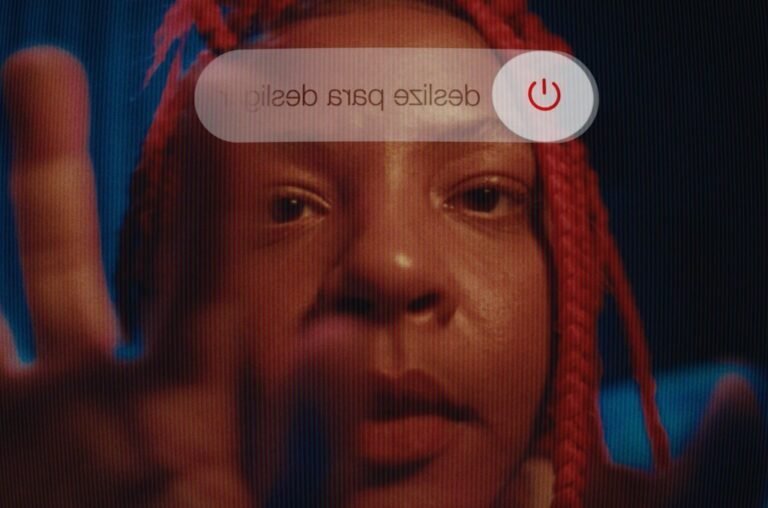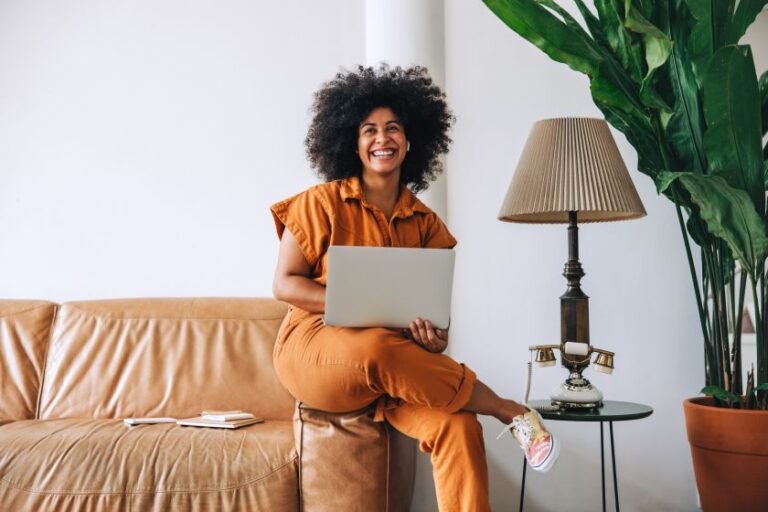

Welcome to the 294th installment of A View From the Easel, a series in which artists reflect on their workspace. This week, artists relish working alongside musicians and cherish the creativity woven into the streets of Ghana.
Want to take part? Check out our submission guidelines and share a bit about your studio with us through this form! All mediums and workspaces are welcome, including your home studio.
Patrick Quarm, Takoradi, Ghana

How long have you been working in this space?
Two years.
Describe an average day in your studio.
Over the years, I’ve come to see my studio as both an escape and a bridge, a space that connects my imagination to reality. It’s where I live inside my head, play with ideas, and translate them into physical form. I treat my studio practice like a 9 to 5 job. I take about 30 minutes to an hour to settle in, reviewing what I did the day before, rethinking decisions, and clearing my head. It’s my ritual to find my center before the real work begins. If I’m not mentally present, nothing good happens on the canvas.
In the studio, my work involves collaging, cutting, erasing, gluing, moving pieces around, picking up paintings, hanging them, then putting them back on the table to collage some more. Working alone is manageable, but having an assistant makes this flow much easier and smoother. Music is non-negotiable. Without it, the studio feels flat. When I work with my assistant, everyone gets a turn as DJ.
How does the space affect your work?
The space I work in is critical to what I make. The studio isn’t just where I create; it’s part of the creative process itself. Even the way I arrange the African print fabrics in the studio is intentional. I lay them out in full view, so when I’m working on a painting and hit a pause, wondering what fabric fits best, I don’t have to scramble through piles. I simply turn my head, take in the colors, patterns, and textures, and something clicks.
My main studio in Ghana is a space I dreamed of for years before I finally built it. It’s spacious with high ceilings, giving me the freedom to work on large-scale projects, explore new ideas, and push the boundaries of my practice. My studio is also a bit of a hybrid space, part of my home. It’s like a built-in escape from the pressure of making work, but still close enough to return whenever inspiration strikes.
How do you interact with the environment outside your studio?
While there isn’t a large art scene in Takoradi like you’d find in Accra or New York, there’s a rich community of craftspeople, carvers, potters, batik makers, ceramic artists. I often step outside the studio to spend time with them. There’s one carver in particular I enjoy working with. I’ve learnt so much just watching him work. Over time, we’ve developed a creative relationship where I can experiment with his materials, bounce ideas off him, and even collaborate on projects.
Beyond the studio, I’ve always loved gardening. Most mornings or evenings, you’ll find me out there planting or tending to the garden. It’s a part of my life that has nothing to do with art, yet it fuels my creativity. Takoradi is also a coastal town, and the beach is one of my favorite escapes. It’s that peaceful, laid-back energy that drew me to build my permanent studio here. It’s removed from the constant noise of New York.

What do you wish were different?
My studio situation spans both Ghana and the US, specifically New York. My main studio in Ghana allows me to work on ambitious projects. However, one challenge I face there is access to art materials. Many essential supplies I rely on — certain types of canvas, matte medium, pH-neutral glue, and quality oil paints — are not readily available in Ghana. To manage this, I periodically ship materials to Ghana to maintain my inventory. Whenever I plan a trip back, I stock up on the necessary supplies and tools beforehand. I have found a few art shops in Accra that carry some of these materials, but it’s still not enough to meet my needs. I often wish I could simply drive to a local art store and find everything I need on the shelf.
What is your favorite local museum?
In Ghana, my favorite “museum” isn’t a traditional building at all. It’s the local artists and artisans themselves. I love spending time with them, learning about their crafts, their materials, and their techniques. There’s something inspiring about seeing how these traditional processes and practices live and breathe in everyday life. I enjoy visiting galleries in Accra when I’m there, but mostly, the real gallery is out on the streets.
When I’m in the US, I’m a regular museum visitor. Some of my favorites include The Met in New York and the Detroit Institute of Arts. Living between these two worlds is a privilege, and it’s given me a unique perspective on what a museum can be. In Ghana, art is woven into daily life. It’s functional, vibrant, and everywhere. We wear it, dance with it, and live alongside it. Walking the streets, you encounter hand-painted signboards, roadside artists, and craftspeople creating magic in real time. The community itself is a living museum, rich with creativity and culture. It’s a powerful reminder that art isn’t confined to walls. It’s alive in the everyday.
What is your favorite art material to work with?
My favorite material to work with is definitely oil paint. It gives me so much flexibility and freedom in how I express myself. But honestly, I can’t pick just one. I also love working with fabric. It’s the combination of these materials in the studio that keeps my practice exciting and alive. If I were just painting with oils all the time, it might get overwhelming or routine. But moving between oil painting, collaging, layering fabric, hanging works up, taking them down to work on again — that constant motion keeps me energized and in love with what I do.
Cecilia Beaven, Chicago, Illinois

How long have you been working in this space?
Two and a half years.
Describe an average day in your studio.
My studio is my favorite place, a space for freedom, experimentation, and getting lost in my work. I go whenever I can, though I don’t follow a set routine — maybe because routine feels at odds with what the space offers me. I usually have more than one project going on at once, and I alternate between drawing, painting, making sculptures, and planning new work. I love listening to audiobooks while working; I feel like I can be completely focused on both the narrative and my artwork, as if the two activities engage entirely different parts of my brain. However, even when I’m completely immersed in both, I know the narratives are seeping in. Some narratives leave visible traces and others dissolve into a mood. My favorite recent listen is Martyr!, a novel by Kaveh Akbar.
How does the space affect your work?
My studio is in the Fine Arts Building, a 19th-century architectural landmark in Chicago. The building itself is a source of inspiration, not just for its beauty, but for the history it carries and its remarkable community, past and present. It’s a place where art thrives in all its forms: music, instrument-making, puppetry, architecture, literature, and visual arts. While working in my studio, I might hear my violin-maker neighbor testing a new instrument, or a singer rehearsing a piece behind a nearby door. There are very few places that hold such a rich, living dialogue between disciplines. I love that diversity, it creates a sense of a shared creative ecosystem. I’m grateful to be one more voice in that conversation.


How do you interact with the environment outside your studio?
My studio is in downtown Chicago, which holds some of the city’s most iconic buildings and public sculptures. The area has an inherently artistic spirit — home to the Art Institute of Chicago and the School of the Art Institute of Chicago — so I often cross paths with people from that creative community. But it’s also the city’s core: a touristic, fast-moving business hub that can feel impersonal at first glance. I think I’m one of the few Chicagoans (can I call myself that after eight years?) who actually enjoys being in the Loop every day. Maybe it’s because I’m from Mexico City and feel at home in hectic environments — I don’t know.
What do you love about your studio?
I love the space itself, its high ceiling, its view of Lake Michigan, the wooden floor, and the building in general. But mostly I love how I feel there. It’s a space for my ideas, feelings, and experimentation, so I just feel content and at peace.
What do you wish were different?
I’d love to have a bigger space. I enjoy creating large-scale pieces, and although I’ve managed to make it work in my small studio, it often feels like I’m playing Tetris … constantly rearranging everything for each new project.
What is your favorite local museum?
The Art Institute of Chicago is just a block away — not too bad!
What is your favorite art material to work with?
This is a cruel question. I love materials and experimentation. But maybe my favorite is the most basic drawing tools: pen and ink on paper, since that’s how all my ideas begin.


